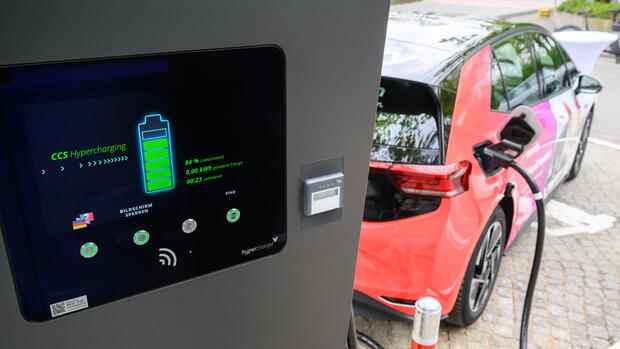Brussels In theory, every normal car could be driven in a climate-friendly manner – because petrol and diesel can also be produced from green electricity instead of from crude oil. So-called e-fuels will play an important role in the future when it comes to making Europe climate-neutral. They are intended to be used in airplanes and ships – but not in cars. The European Parliament decided on Wednesday.
The reason for this: clean electricity is scarce. And driving a conventional car with e-fuels uses about five to six times as much of it as driving an electric car, experts say.
In order to make road traffic climate-neutral, extremely large amounts of green electricity are needed anyway. The detour via e-fuels would hardly be realistic.
However, you have to consider the entire life cycle of a car. A lot of electricity is used to manufacture the battery. This is why electric cars, especially those with a long range, are significantly more polluting to produce than cars with internal combustion engines.
Nevertheless, the electric car comes off much better, as various studies have shown. According to a study by the Fraunhofer Institute for Systems and Innovation Research in Karlsruhe, a compact electric car purchased in 2020 emits around 25 tons of CO2 over 15 years, including its production. This value could drop significantly in the future when more energy from wind and sun arrives in the power grid.
A petrol engine emits almost twice as much. Even with advanced technology, it won’t get as clean as a Stromer.
>> Read here: The approaching end for e-fuels affects Porsche in particular
If you run the combustion engine with e-fuels, that would be the most environmentally harmful option today with emissions of 75.2 tons. With more renewable electricity in the future electricity mix, e-fuels will be cleaner than classic petrol, but they will not come close to the values of electric cars.
E-fuels could come from Africa
The proponents of e-fuels make a different calculation. You say that e-fuels should not be manufactured in Europe, but in North Africa, for example. Wind and sun can constantly generate large quantities of clean electricity there. In order to get the energy to Europe, it is converted into hydrogen or e-fuels. Electric cars, on the other hand, can only be charged with electricity that is generated under poorer conditions in Europe.
>> Read here: Porsche makes a risky bet on synthetic gasoline
The problem with this argument: Green hydrogen is a crucial bottleneck when it comes to reducing emissions from the European economy. The projects planned so far for production in Africa, Australia and on other continents are far from sufficient to supply heavy industry, air traffic and shipping in Europe. Using the fuels produced there for driving would therefore compete with transformation in other areas.
On the other hand, in the future, electric cars could largely be charged with electricity that is otherwise not used. To do this, the charging stations would have to be programmed in such a way that they draw electricity when there is excess capacity when there is a lot of sunshine and wind.
In the supplier industry, it is argued that e-fuels must be given more time in order to possibly become competitive. Martin Wietschel from the Karlsruhe Fraunhofer Institute for Systems and Innovation Research ISI sees little chance for this: “Physics sets limits that cannot be shifted even through technical progress,” says the professor.
Where technical progress is still possible
There is still potential in the production of e-fuels. So far, the manufacturing processes have achieved an efficiency of around 60 percent. 75 percent would be possible, says Wietschel. This means that only 25 percent of the energy would be lost during production.
But most of the energy is lost in the motor. Even modern diesel and petrol engines only convert 28 percent of the energy supplied into motion. For electric motors it is 85 percent.
>> Read here: Electric motors don’t need pistons: supplier giant Mahle is in crisis
Great advances in the combustion engine can hardly be expected now that the systems have been perfected for decades. Combustion cars only become more economical if an electric motor helps, i.e. as a hybrid. Even hydrogen-powered fuel cell vehicles are not considered competitive if climate protection is the decisive criterion.
However, battery production is far from being as efficient as it could be. An energy guzzler are drying processes that can be further optimized. “There is still a lot that can be done with batteries. We assume that in the future they can be manufactured in a more environmentally friendly way than we have shown in our studies to date,” says Wietschel.
The use of raw materials can also still decrease. The Fraunhofer Institute estimates that the amount of cobalt used will halve within ten years. This is not to be expected with lithium. The largest producers are Australia, Chile and China.
Rare earths are also still needed. So far they have come almost exclusively from China. There are also deposits in other countries, but some of them still have to be developed. Combustion engines have a clear advantage in this area: they are not dependent on any of these materials.
More: No chance for e-fuels: EU Parliament to ban new combustion engines from 2035
